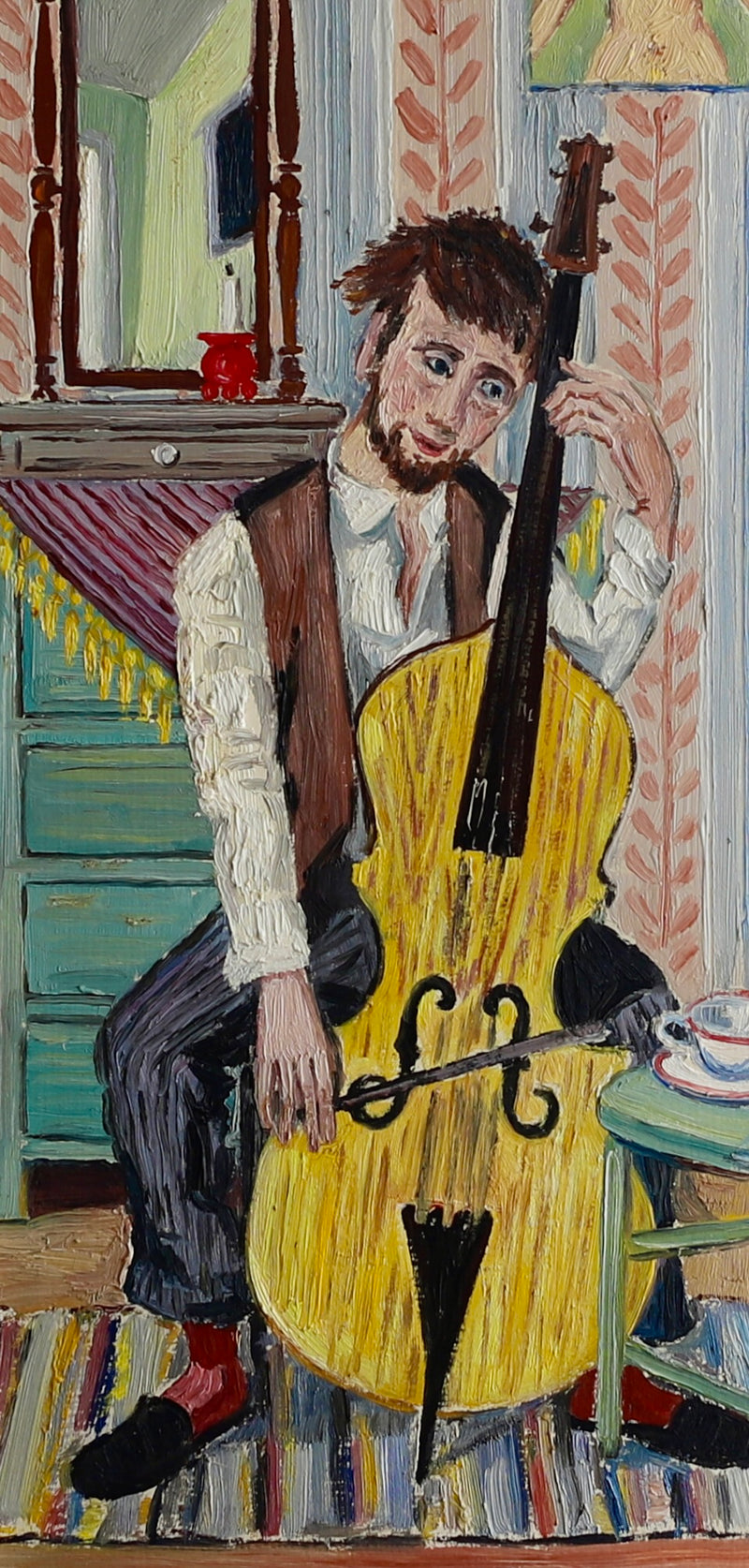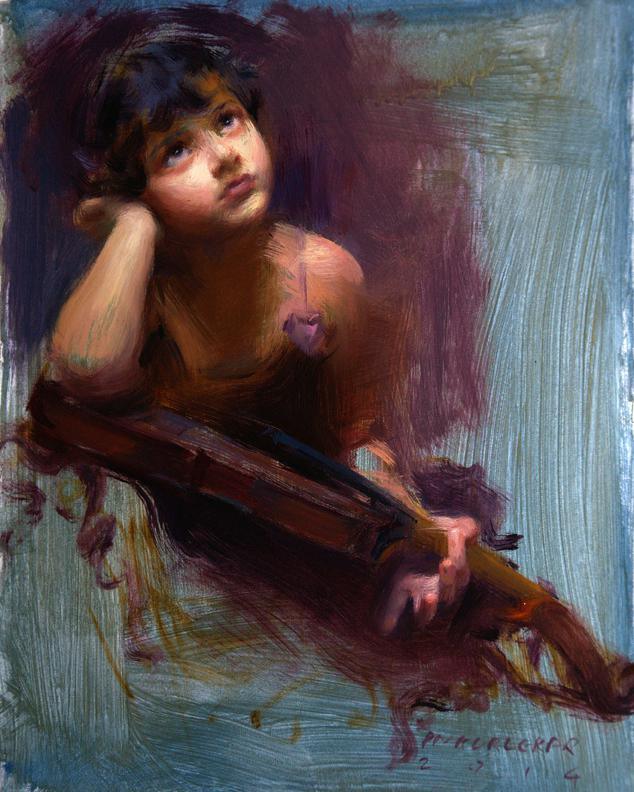Why Figurative Oil Painting Remains an Ageless Option for Artists
Wiki Article
The Evolution of Metaphorical Oil Paint: Recognizing Its Historic Value and Modern Interpretations
The evolution of metaphorical oil painting serves as an engaging lens with which to examine the interaction between creative expression and historic context. Contemporary artists, attracting from this rich heritage, are currently reinterpreting the human figure in means that challenge typical narratives.Beginnings of Figurative Oil Paint
The origins of metaphorical oil painting can be mapped back to the early Renaissance in Europe, specifically in the 15th century. This duration marked a substantial departure from the rigid kinds and flat depictions particular of medieval art. Musicians started to check out naturalism, stressing the human figure and its emotional expression. The growth of oil paint enabled higher deepness of color and information, enhancing the realistic look and vibrancy of their work.
In this transformative era, figures were frequently portrayed within contextually rich environments, showcasing not just their physical features however likewise their mental states. Pioneers such as Jan van Eyck and Titian harnessed the tool's versatility, using layering strategies to accomplish luminosity and appearance. This technology assisted in the portrayal of intricate textiles and the nuances of skin tones, contributing to the development of portraiture and narrative scenes.
Furthermore, the Renaissance focus on humanism promoted a gratitude for individualism, which subsequently influenced artists to produce more dynamic and relatable figures - figurative oil painting. Because of this, figurative oil paint became an effective automobile for storytelling and psychological interaction, laying the groundwork for future creative movements and designs
Key Historic Motions
Significant historic movements have actually formed the evolution of figurative oil paint, each contributing unique philosophies and methods that expanded the tool's opportunities. The Renaissance noted a zero hour, emphasizing realistic look and the human type, with artists like Leonardo da Vinci and Michelangelo pressing the boundaries of physiological accuracy and perspective. Following this, the Baroque age brought dramatic contrasts of light and darkness, exemplified by Caravaggio, that infused spiritual themes with extreme emotionality.The 19th century introduced Romanticism and Realistic look, where musicians such as Delacroix and Courbet challenged classic perfects, focusing on individual expression and daily life. The advent of Impressionism even more reinvented the tool by emphasizing the impacts of light and shade, bring about a departure from conventional representation.
In the very early 20th century, activities like Expressionism and Cubism redefined metaphorical painting through abstraction and the exploration of emotional deepness. Each of these activities not just reflected the societal modifications of their times however additionally prepared for contemporary interpretations. The interplay between these historical motions has produced an abundant tapestry of viewpoints and styles, influencing contemporary musicians in their quest of catching the human experience on canvas.
Methods and Products Development

Throughout the Baroque period, strategies such as chiaroscuro and sfumato arised, boosting the emotional vibration of figurative make-ups. Artists started to explore glazes and impasto, controling texture and brightness. By the 19th century, innovations like using pre-mixed paints in tubes transformed access, enabling musicians to paint en plein air and catch the fleeting impacts of light.
The 20th century observed the introduction of artificial pigments and mediums, which broadened the scheme and altered the uniformity of oil paints. The expedition of new click reference application strategies, such as palette knives and brushes of differing rigidity, additional varied artistic expression. Jointly, these developments mirror the evolving connection in between materials, methods, and the imaginative vision inherent in figurative oil paint.

Contemporary Interpretations
Contemporary interpretations of metaphorical oil paint show a vibrant discussion between custom and advancement, where musicians test developed standards and discover varied motifs. This advancement shows up in numerous means, as modern musicians mix timeless strategies with modern-day principles, often addressing social, political, and personal narratives.Many practitioners draw ideas from historic jobs, yet they instill their pieces with contemporary perspectives, utilizing the human kind as a vehicle for discourse on identity, culture, and sex. Artists increasingly experiment with abstraction, distortion, and blended media, which permits a broader analysis of the figure and its context.
Furthermore, making use of dazzling color palettes and unusual structures frequently offers to interrupt traditional watching experiences, prompting vital engagement from target markets. This shift in emphasis extends past looks; it shows an expanding understanding of the intricacies of human experience in an interconnected world.
As metaphorical oil painting continues to progress, it remains an essential medium for discovering the nuances of contemporary life, personifying both a respect for heritage and a dedication to progressive idea. The result is a rich tapestry of expression that reverberates with the helpful site complexities of the modern-day human condition.
Influence on Modern Art
The influence of figurative oil painting on contemporary art is extensive, as it has actually constantly influenced a myriad of imaginative movements and practices throughout the 20th and 21st centuries. From Expressionism to Surrealism and past, the exploration of the human figure has stayed a main motif, permitting musicians to convey complex emotions and narratives. This emphasis on figurative representation has actually caused a re-examination of traditional techniques, resulting in ingenious techniques that mix realistic look with abstraction.
Additionally, modern musicians have actually accepted metaphorical oil paint as a way to attend to political and social concerns, utilizing the medium to challenge perceptions of identification, society, and sex. The revival of interest in figurative job in current years shows a hoping for connection in a progressively digital globe, where human experience and feeling are vital.
Furthermore, the discussion between figurative oil paint and contemporary art is obvious in the works of artists such as Kehinde Wiley and Jenny Saville, that attract on historical referrals while instilling their pieces with contemporary importance. Eventually, figurative oil paint proceeds to form and redefine contemporary artistic expression, emphasizing its long-lasting importance Full Report in the art world.
Verdict
The evolution of metaphorical oil paint highlights its historic importance and flexibility across different imaginative movements. Eventually, metaphorical oil paint remains a crucial tool for exploring the human experience, resonating greatly in today's electronic landscape.The evolution of metaphorical oil paint serves as a compelling lens with which to check out the interplay between creative expression and historic context.Substantial historical movements have formed the advancement of figurative oil painting, each contributing special ideologies and techniques that expanded the medium's possibilities.As historic activities formed the trajectory of metaphorical oil paint, the materials and techniques employed by artists have likewise undergone considerable transformations. figurative oil painting.The impact of metaphorical oil paint on modern art is profound, as it has constantly influenced a myriad of artistic movements and practices throughout the 20th and 21st centuries.The evolution of figurative oil paint emphasizes its historic value and flexibility throughout different creative motions
Report this wiki page